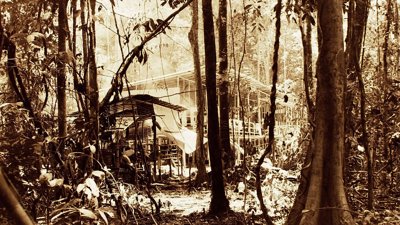Please join us to celebrate the original geographical and caving survey of the Gunung Mulu National Park by the Sarawak Forestry Department and the Society in 1977-1978.
The Mulu (Sarawak) expedition 1977-1978
Hear Robin and his colleagues share their first-hand stories, sounds, artefacts, maps and images associated with the original geographical survey of the Gunung Mulu National Park, Sarawak by the Society and the Foresty Department in 1977-1978, and now a UNESCO World Heritage Site.
Mulu: a remarkable rainforest mountain in Sarawak
Dr Paul Chai was the senior forest botanist on the survey of the Gunung Mulu National Park by the Society and the Sarawak Forestry Department (1977-1978). Now, his son Alvin will join us and highlight past and future research opportunities for those visiting this legendary UNESCO World Heritage Site.
About the Gunung Mulu National Park 1977-1978 expedition
This pioneering expedition, operating from ‘Long Pala’, the temporary longhouse on the river Melinau, in the pristine rainforests of Sarawak, Malaysia, brought together a multidisciplinary team of over 100 geographers, cavers, biologists and taxonomic scientists (notably the Royal Botanic Gardens Kew and the Natural History Museum), from 11 different nations, to explore, document, and map the park’s remarkable karst systems, biodiversity, and unique ecosystems
The survey led by Robin Hanbury-Tenison resulted in groundbreaking discoveries, including the mapping of some of the world’s largest cave chambers and passages, such as the iconic Sarawak Chamber and Clearwater Cave.
This fieldwork was possible due to the skills and expertise of the local Berawan and Penan communities, who worked alongside the scientists, on foot operating from a network of sub-camps on Gunung Mulu and near the caves and sharp limestone pinnacles of Gunung Api.
The scientific outputs from this expedition significantly contributed to our understanding of tropical karst landscapes, cave hydrology, and the ecological significance of the region’s flora and fauna.
